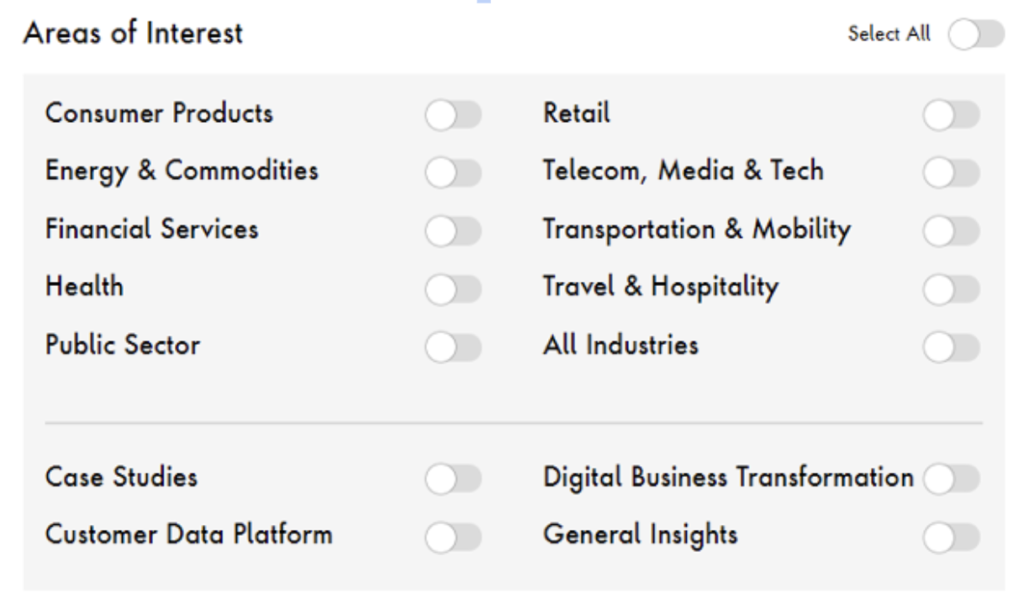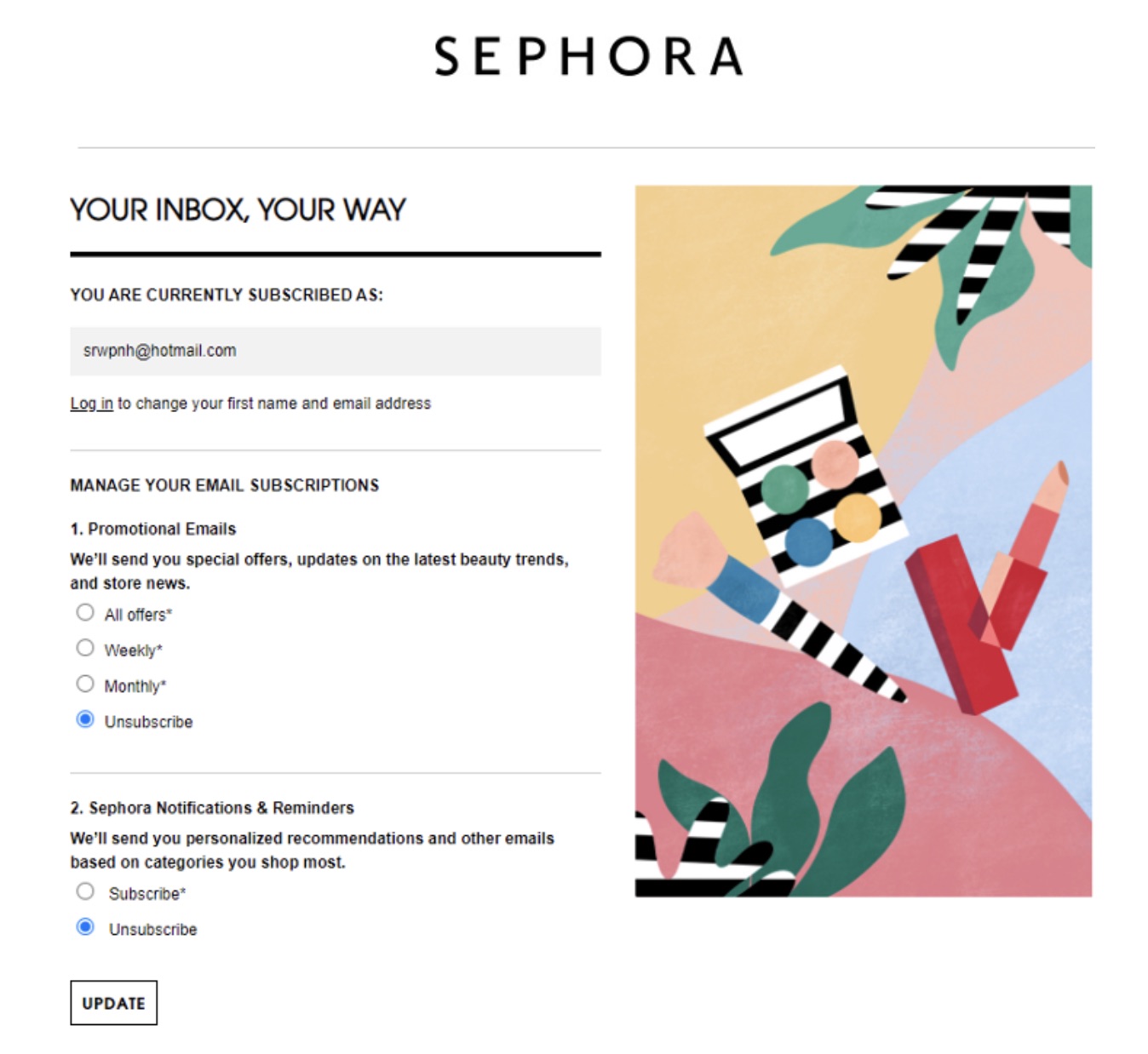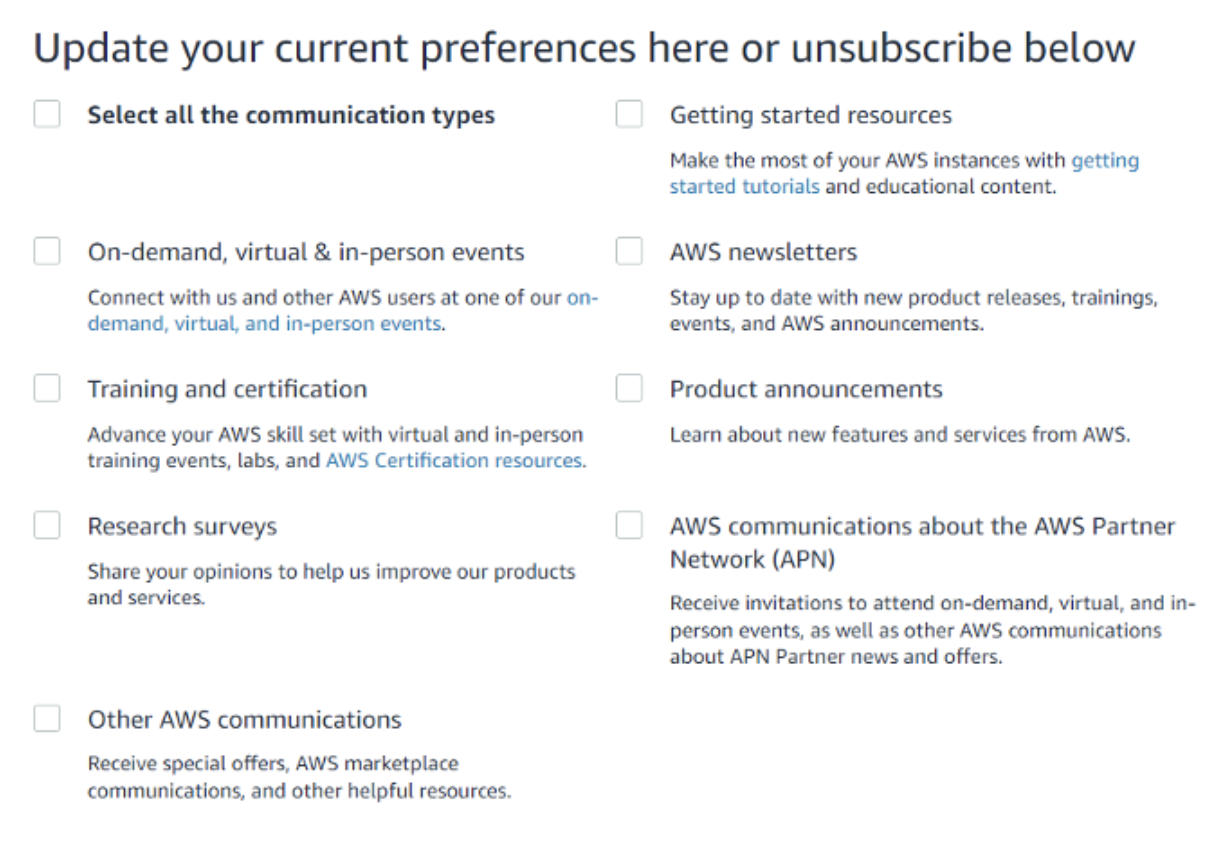
Across industries, the average unsubscribe rate lies within a range, with 0.1% being the most common and 2% being the accepted indicator something is amiss with your retention. Many marketers will attribute the email content or frequency itself directly to unsubscribes, however reducing unsubscribes doesn’t stop at the emails themselves.
What is a preference centre?
A preference centre is a tool used by marketers to give their recipients control over what marketing communications are sent to them, ultimately empowering the recipient and reducing the number of unsubscribes.
Preference centres enable the customer to choose exactly what marketing content they want to receive in their inbox. An inbox is a private and tailored space to the customer and respecting that goes a long way.
A brand’s preference centre is hosted on the main company website, normally on a landing page and is linked to from all marketing email sends. This means it’s global – encompassing the whole brand and not just tied to any specific product or service.
Preference centres can also be used as a touchpoint for marketers to collect more data. Customers can submit more granular preferences, such as those in the Publicis Sapient example below, that would have otherwise have been inferred. Instead, the data can be used to tailor future content plans and initiatives.
Furthermore, these tools can be created seamlessly using your Adobe Campaign Web Applications or Adobe Marketo Engage instances, at no additional cost.
What a preference centre is not, is a way of bypassing unsubscribes. There should always be a full unsubscribe option – which is not necessarily a negative thing. You always want to be targeting your marketing efforts to your most relevant, interested customers. Whether that’s business to business or business to customer – the principles are the same.
Why use a preference centre?
The problem with a flat unsubscribe link is that there could be numerous reasons for someone wanting to unsubscribe. For example, a staggering 51% unsubscribe because the emails are too frequent.
What if you could influence even a small percentage of potential unsubscribes from unsubscribing? For example, if your firm offered car and house insurance but the customer doesn’t own a car, they could opt-out of all car insurance related emails instead of all emails.
TAP CXM have recently implemented a preference centre for a pet insurance company and the results have proven their capabilities in customer retention. 1.5% of all that were sent a recent newsletter clicked through to manage their preferences. Of those managing their preferences, only 7.5% unsubscribed, with the remaining selecting exactly what content they want to receive without blocking all communications. This led to the campaign attributing a total unsubscribe rate of 0.1% – far below the industry average.
You could even add another layer of preference and include frequency of emails, suggesting slower communications. This reduces potential perceived spamming, hence the likelihood of unsubscribing drops too.
A preference centre shows that the recipient’s boundaries are respected. In fact, subscribing to receive emails at a frequency the consumers choose is twice as popular as subscribing to receive emails at a company’s predetermined frequency. Notably, this is opposite to what most marketers assume.
In summary, preference centres increase retention, saving otherwise lost opportunities to maintain their position in the marketing funnel.
Types of preference centres:
There are different strategies employed by companies in respect to the level of detail their preference centres enable. Finding the right balance for your customers is key.
Here are just a few good examples of the level of preferences you can offer:
Granular preferences – Publicis Sapient:

Frequency-inclusive preferences – Sephora:

Communication functions into preferences – AWS:

Knowing what preferences are available is the easy bit, but which is best for your customers?
There are some general rules as to what preferences should be enabled, but rigorous and cyclic A/B testing paired with well-honed buyer personas can be great tools to optimise your preference centre.
Additional preference centre functionalities:
Even once you have decided on the specific type of preferences you want to offer, there are additional functionalities and caveats worth considering.
For example, while using a single preference centre for global use, you can adopt country segmentations to change the language dynamically. With a global preference centre, you should be considering each country’s laws in explicit or implicit opt-in.
There are also options to enable unsubscribing for a limited time or have a double opt-in feature. These functions can be extremely powerful if applied to the right use-case but require heavy involvement in their testing due to the many moving parts.
Preference centres can become complex yet powerful beasts if you harness their full potential.
If you’re interested in deploying a preference centre via your Adobe Campaign or Marketo instance, we would welcome the opportunity to be your partner of choice and share our expert knowledge.
Contact us if you’d like to discuss it in more detail.



